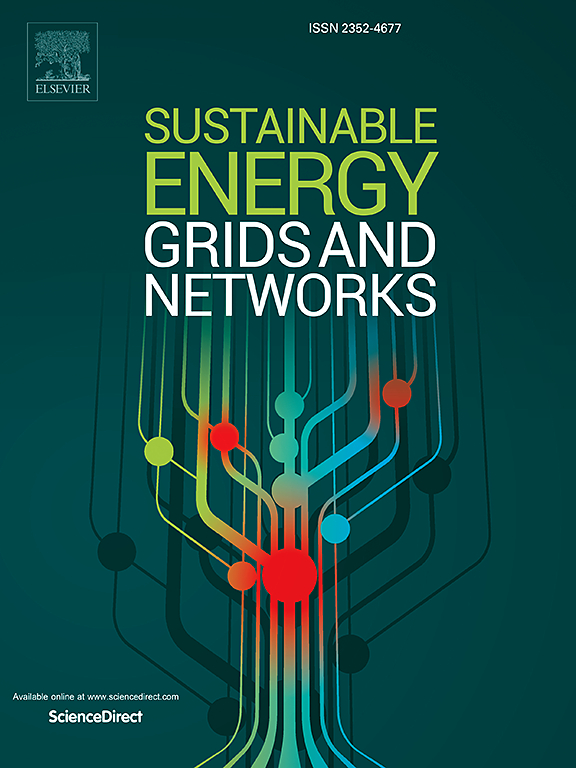以用户为中心的分布式P2P能源交易模型,用于管理能源社区的线路拥堵
IF 5.6
2区 工程技术
Q2 ENERGY & FUELS
引用次数: 0
摘要
本文提出了一个以用户为中心的、完全去中心化的框架,允许能源社区(EC)通过点对点(P2P)能源交易和灵活的市场来自我管理线路拥堵问题,使用用户的分布式能源资源(DERs)资产在有盈余(赤字)时扮演能源卖方(买方)的角色。引入了一个基于三阶段优化的模型来考虑用户的偏好,并使用Distflow模型来评估配电网络(DN)的局限性,从而识别线路拥塞问题。在这方面,用户在第一个优化阶段通过优化他们的DER操作来最大化他们的利益。第二阶段,配电网运营商根据用户的偏好,求解最优潮流模型来识别潜在的拥塞。如果出现拥塞,第三阶段启动P2P能源和灵活性市场,旨在通过最小化与用户初始偏好的偏差来解决问题。为了实现完全的去中心化,采用了两步交替方向乘数法(ADMM)算法:第一步解决最优潮流问题,第二步管理P2P和灵活性市场。在33总线DN上进行了不同DER渗透水平的测试,表明该方法有效地满足了能源需求,同时尊重了网络的物理限制并提高了信息安全性。本文章由计算机程序翻译,如有差异,请以英文原文为准。
User-centered decentralized P2P energy trading model for managing line congestion in energy communities
This paper presents a user-centered, fully decentralized framework to allow an energy community (EC) to self-manage line congestion issues through peer-to-peer (P2P) energy trading and a flexibility market using the users’ distributed energy resources (DERs) assets to take an energy seller (buyer) role when they have a surplus (deficit). A three-stage optimization-based model is introduced to consider the users’ preferences and identify line congestion issues using the Distflow model to evaluate the distribution network (DN) limitations. In this regard, users maximize their benefits in the first optimization stage by optimizing their DER operation. In the second stage, the distribution system operator (DSO) solves an optimal power flow model to identify potential congestion given the users’ preferences. If congestion occurs, the third stage activates a P2P energy and flexibility market designed to resolve the issue by minimizing deviations from the users’ initial preferences. To achieve full decentralization, a two-step alternating direction method of multipliers (ADMM) algorithm is employed: the first step addresses optimal power flow, while the second manages the P2P and flexibility market. Tests were conducted on a 33-bus DN for different DER penetration levels, showing that the methodology efficiently meets energy requirements while respecting the network’s physical constraints and improving information security.
求助全文
通过发布文献求助,成功后即可免费获取论文全文。
去求助
来源期刊

Sustainable Energy Grids & Networks
Energy-Energy Engineering and Power Technology
CiteScore
7.90
自引率
13.00%
发文量
206
审稿时长
49 days
期刊介绍:
Sustainable Energy, Grids and Networks (SEGAN)is an international peer-reviewed publication for theoretical and applied research dealing with energy, information grids and power networks, including smart grids from super to micro grid scales. SEGAN welcomes papers describing fundamental advances in mathematical, statistical or computational methods with application to power and energy systems, as well as papers on applications, computation and modeling in the areas of electrical and energy systems with coupled information and communication technologies.
 求助内容:
求助内容: 应助结果提醒方式:
应助结果提醒方式:


